Electron Microscopy
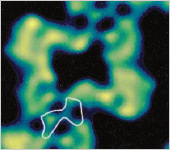
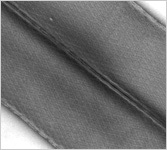
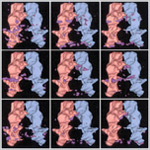
Our laboratory uses the technique of electron microscopy to study the structure of membrane transport proteins (e.g. the sarcoplasmic reticulum calcium pump and the sodium-proton exchanger) and prions (e.g. elk and hamster prion fibrils).
A microscope is a tool that lets the user see objects at a magnification greater than the actual specimen. However, conventional light microscopes have a limited resolution that is approximately the wavelength of the incoming light used to illuminate the sample. This means that features on the sample much smaller than the wavelength of light cannot be differentiated from one another. In order to see smaller (atomic) details, a microscope that uses an illumination source with a smaller wavelength is needed. An electron microscope is used to magnify things on a fine scale. It uses a beam of electrons to illuminate a specimen and create a highly-magnified image (up to 1 million times, while the best light microscopes are limited to magnifications of 1000 times).
Electron microscopy offers a number of advantages for examining the structures of biological molecules. First, specimens can be analyzed in many different forms, including two- or three-dimensional crystals, helical filaments or crystals, single molecules or particles, and single cells or organelles. Second, the moderate resolution structures of intact macromolecular complexes can be combined with high resolution structures of its components determined by other techniques (X-ray crystallography, NMR, molecular modeling). In such cases, the complimentary information can provide insights into the functional states and conformational changes in biological machines that are directly relevant to their cellular functions. Third, moderate resolution structural information can be obtained in a timely and efficient manner. At the typical resolutions achieved (50 Å to 3.5 Å resolution), macromolecular quaternary, tertiary and secondary structural details are readily obtainable goals.
X-ray Crystallography
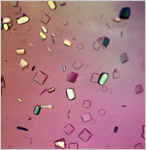

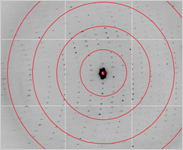
Our laboratory also uses the technique of X-ray crystallography to study the structure of membrane transport proteins (e.g. the sarcoplasmic reticulum calcium pump and the sodium-proton exchanger).
X-ray crystallography is a method for determining the arrangement of atoms within a protein or macromolecule. In this technique, a beam of X-rays is used to illuminate a crystal of the protein or macromolecule, where some of the incident X-rays are scattered in many specific directions (forming a diffraction pattern). From the angles and intensities of these diffracted beams, we can produce a three-dimensional picture of the density of electrons within the protein or macromolecule. From this electron density, the mean positions of the atoms in the crystal can be determined, providing a very detailed view of the protein.

